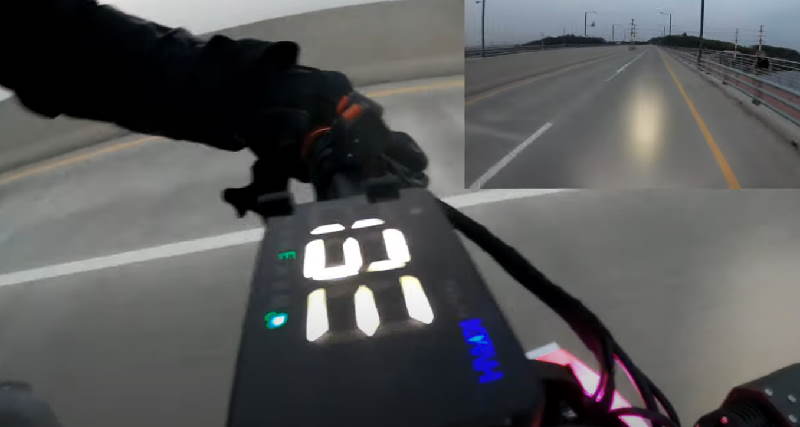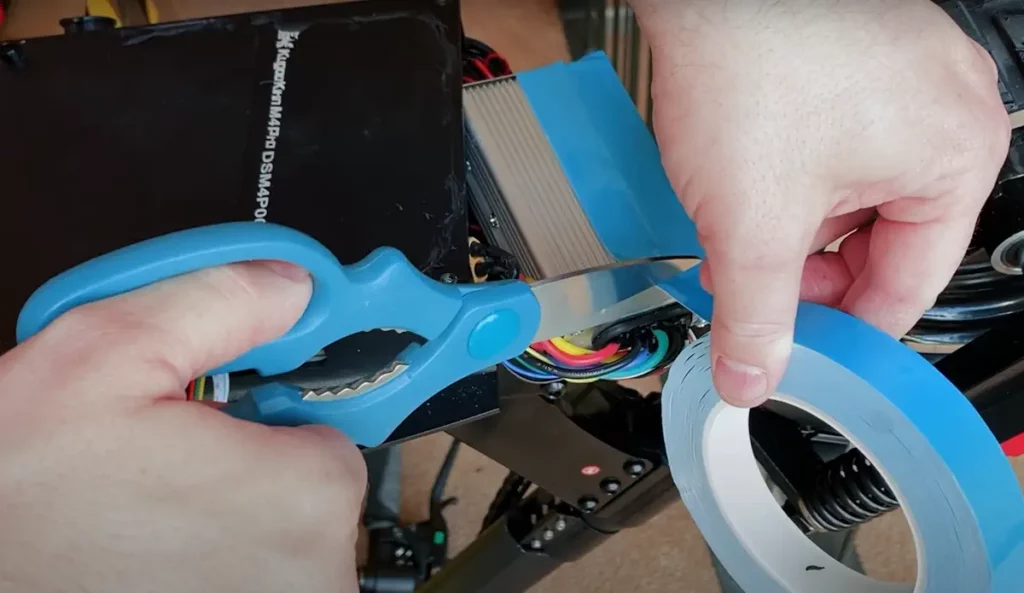Electric scooters are simply the perfect commuting option, light years ahead of any other. The advantages they provide are unmatched.
So, read on to find out exactly why they are the most economical, efficient, fast, safe and clean mode of urban transport.
 Cost-effectiveInvesting in a quality scooter at around $500, offering years of reliable service and saving you money, often paying for itself within a year
Cost-effectiveInvesting in a quality scooter at around $500, offering years of reliable service and saving you money, often paying for itself within a year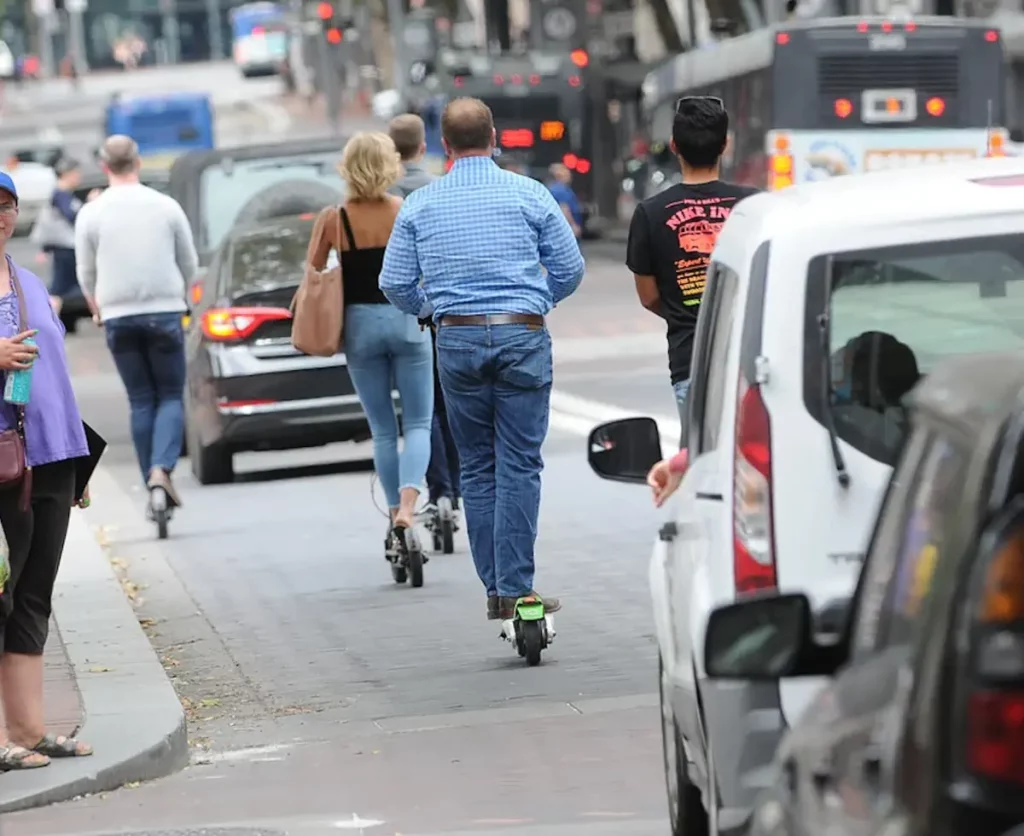 Flexible in trafficYou can effectively avoiding traffic jams by being agile and versatile in urban environments, which has led to a significant reduction in commute time compared to other modes of transportation.
Flexible in trafficYou can effectively avoiding traffic jams by being agile and versatile in urban environments, which has led to a significant reduction in commute time compared to other modes of transportation.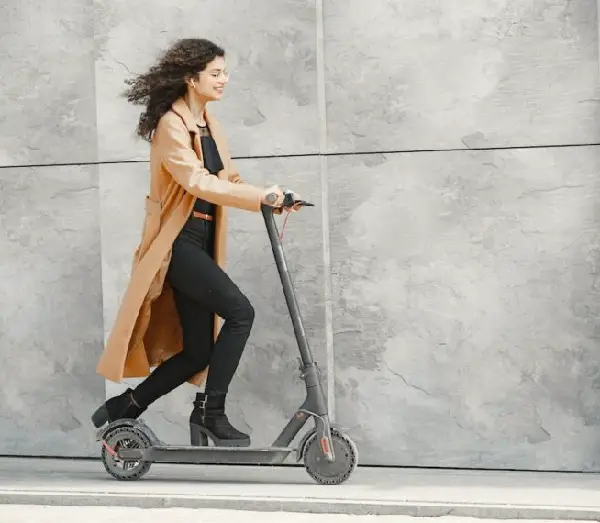 Effortless ridesElectric scooters offer hassle-free, efficient commute without the physical exertion and preparation required when riding a bike.
Effortless ridesElectric scooters offer hassle-free, efficient commute without the physical exertion and preparation required when riding a bike.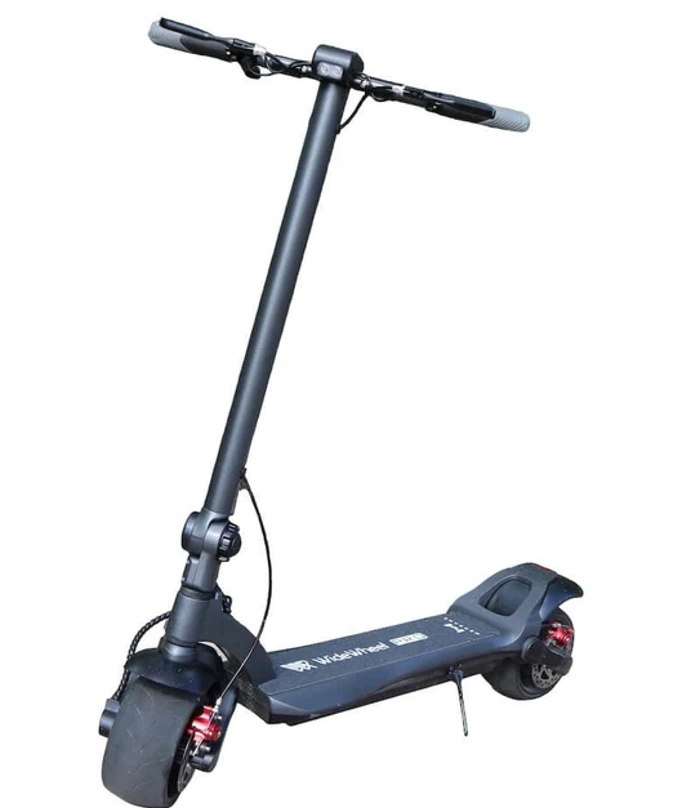 Great rangeElectric scooters now commonly offer a range of around 15 mi / 25 km on a single charge, although real-world usage may reduce this to approximately 75% of the advertised range
Great rangeElectric scooters now commonly offer a range of around 15 mi / 25 km on a single charge, although real-world usage may reduce this to approximately 75% of the advertised range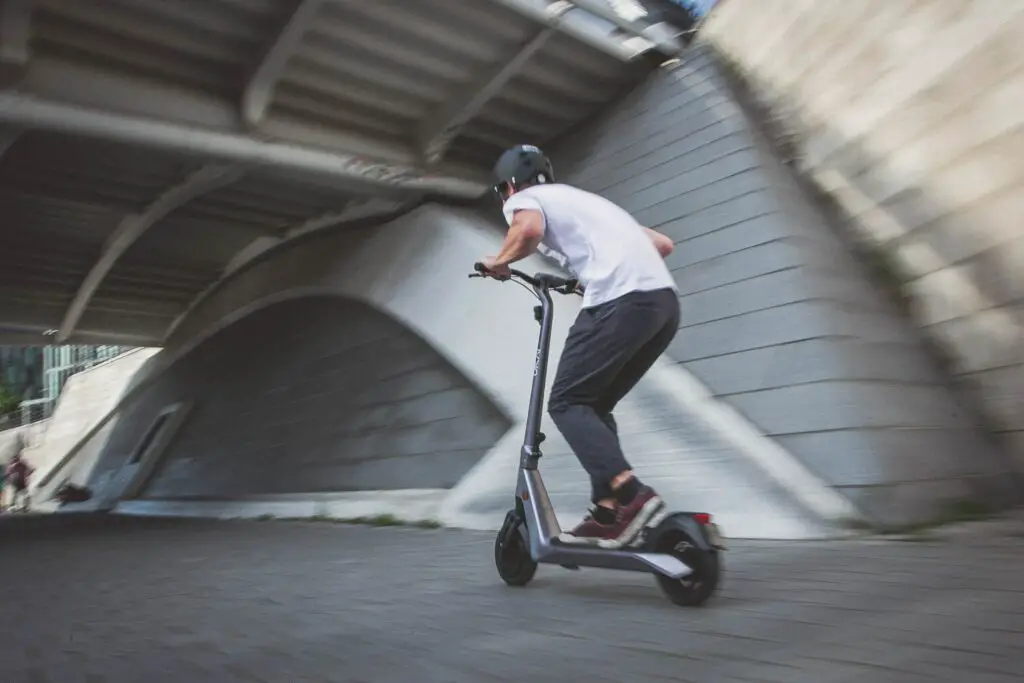 Fast-movingA consistent 15 mph / 25 kmh electric scooter riding with minimal stops offers efficient commuting, particularly when you have dedicated bike lanes or open roads.
Fast-movingA consistent 15 mph / 25 kmh electric scooter riding with minimal stops offers efficient commuting, particularly when you have dedicated bike lanes or open roads.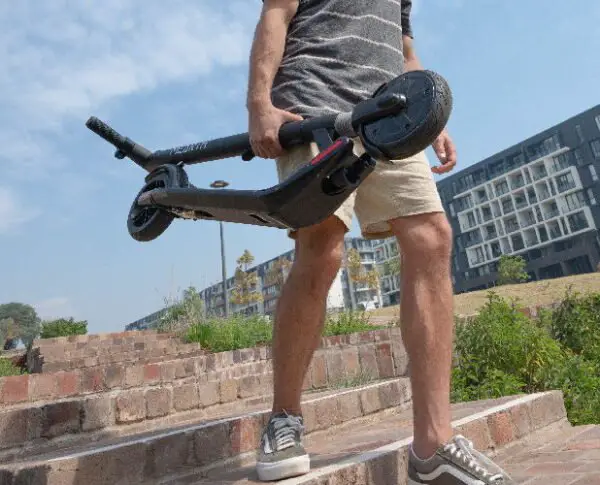 HandyMost commuter scooters are lightweight, weighing under 33 lbs / 15 kg, and designed for easy portability, fitting through doors, car trunks, and on buses or trains.
HandyMost commuter scooters are lightweight, weighing under 33 lbs / 15 kg, and designed for easy portability, fitting through doors, car trunks, and on buses or trains.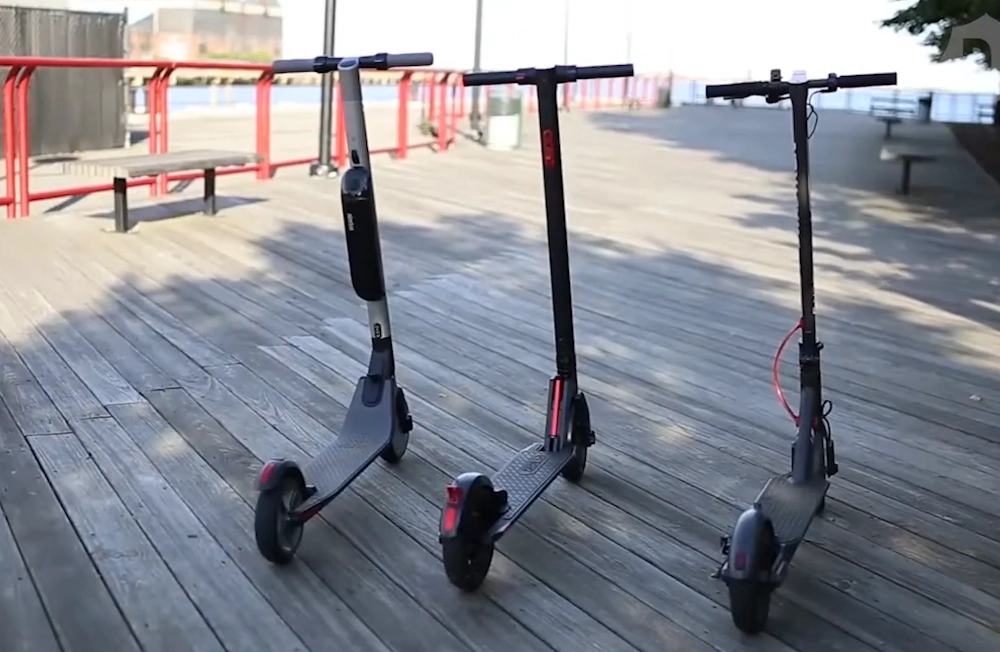 Eco-friendlyElectric scooters, powered by electricity, are an eco-friendly choice, emitting zero emissions, reducing traffic congestion, and promoting cleaner air, contributing to a healthier and more sustainable urban environment.
Eco-friendlyElectric scooters, powered by electricity, are an eco-friendly choice, emitting zero emissions, reducing traffic congestion, and promoting cleaner air, contributing to a healthier and more sustainable urban environment.
Are electric scooters good for commuting?

Electric scooters are the best commuting option for most cities today.
They are very cost-efficient, and never get stuck in traffic. They have many advantages over public transportation, cars, bikes, other rideables, and walking.
Any commute up to 8 miles / 13 kilometers in one way can be easily covered with almost any electric scooter today.
Electric scooters save you money

Electric scooters come in a wide price range, from around $250 to over $7000.
There are excellent scooters available in every price range, although the adage “you get what you pay for” holds true to some extent. Still, you can find quality budget scooters.
A decent electric scooter typically costs at least $500.
It’s an initial investment for transportation, but ongoing expenses are minimal:
- charging an electric scooter is cost-effective
- quality scooters seldom require repairs if chosen wisely
- most good scooters offer at least three years of reliable service, often extending to 5 or even 8 years.
That’s around 6 years of reduced transportation costs!
In many major cities, your electric scooter pays for itself within the first year. Monthly public transport passes are usually $50, and car fuel costs at least that.
You’ll save a minimum of $600 for a single year, enough to purchase some of the popular, trusted electric scooters, not to mention what you can get for $1000.
In the long run, electric scooters prove to be a wise investment.
Electric scooters are not affected by traffic jams

Electric scooters save both money and time, and often time is more valuable than money.
Traffic jams are a major drawback of cars and buses. Electric scooters, however, offer a solution by being flexible in traffic.
Scooters are compact, allowing them to navigate motor lanes, bike lanes, and even sidewalks, reducing time spent in traffic.
They can reach speeds close to motor vehicles but should be ridden at safe urban speeds of around 15-28 mph.
Switching from buses to scooters reduced my commute by approximately 3 to 5 minutes, alleviating the stress of waiting in traffic.
While a car ride may be slightly faster than a scooter ride, the difference is minimal, and the stress of waiting in traffic isn’t worth it.
Using electric scooters instead of cars or taxis reduces traffic congestion, making them an effective way to combat traffic jams.
In summary, electric scooters are an excellent solution for avoiding and potentially eliminating traffic jams.
Electric scooters don’t tire you
The primary rival to electric scooters for commuting is the traditional bicycle.
However, when your goal is a straightforward commute without excessive pedaling, a bicycle doesn’t fit the bill.
This is often the case for professionals and entrepreneurs. They aim to reach work efficiently and be productive without the added effort of a workout, changing clothes, or showering, which can leave them fatigued.
While bicycles have their merits, any commute longer than 1 kilometer can leave you sweating.
Electric scooters, on the other hand, require minimal effort; just push a button, and you’re on your way. This convenience gives them the edge in this scenario.
Electric scooters have great range
One of the significant recent advancements is the increased range of electric scooters.
Today, at least 7 out of 10 scooters can cover a minimum of 15 mi / 25 km on a single charge.
Keep in mind that these figures are often achieved in controlled settings, so expect a slightly lower range in real-world conditions.
In practice, you can usually count on about 75% of the advertised range due to uneven roads, obstacles, and frequent stops.
Nevertheless, most scooters can comfortably achieve around 12 mi / 20 km on a single charge in real-world usage.
This range is more than sufficient for most commutes, and even round trips in some cases.
For in-depth information on electric scooter range, check out my guide.
Electric scooters can be very fast

Going faster raises the risk of accidents, pedestrian or vehicle collisions, injuries, and legal issues.
City riding typically stays around 15 mph / 25 kmh, rarely exceeding 28 mph / 45 kmh.
Going faster raises the risk of accidents, pedestrian or vehicle collisions, injuries, and legal issues.
However, it’s worth noting that electric scooters are still quite speedy. A steady 15 mph / 25 kmh with minimal stops provides efficient commuting.
This holds particularly true when you have bike lanes or long, unobstructed stretches of road.
Electric scooters are very portable and practical

In most cases, you’ll only need to carry your scooter when going to or from your home and office.
For combined commutes or last-mile travel, folding your scooter and taking it on a bus or train is necessary.
These instances typically involve 4 to 6 short-distance carries.
Thankfully, most commuter scooters are designed to be portable. Regular ones weigh under 33 lbs / 15 kg, with heavier models reserved for off-road or racing.
Plus, they easily fit through doors, car trunks, and onto buses or trains.
For more information on portable scooters, take a look at this guide.
Electric scooters are eco-friendly

Electric scooters are powered by electricity, emitting zero emissions and significantly reducing the carbon footprint compared to traditional gas-powered vehicles.
By choosing electric scooters for your daily commuting or leisure rides, you contribute to cleaner air and a healthier planet. Plus, they promote eco-friendly mobility solutions in urban settings, reducing traffic congestion and helping create more sustainable cities.
So, remember you’re not just making a convenient choice – you’re also making a positive impact on our environment.
When are electric scooters not good for commuting?
Naturally, electric scooters are not exactly perfect for literally every commuting scenarios out there.
There are a few use-cases where you might want to think of other solutions for your commute.
A typical scenario is when you have a lengthy bus or train journey, and the stations are in such proximity to your home and workplace that walking for 1 or 2 minutes is more practical than carrying your scooter.
Another commuting situation unsuitable for electric scooters is when you already have a car, and using it for your office commute is the ideal choice. However, such situations are less common today and require:
- living in a city that has little to no traffic jams
- having a free parking space for you at your office
- commutes under 2 mi / 3 km (no point starting a car for a ride that short)
There could be other scenarios such as this, but honestly, I can’t think of any. I guess if you have a commute of about 1 kilometer or less, you can consider walking. But that’s about it.
If you want to get an electric scooter, get one. They are not exclusively used for commuting, and you will get a lot of value and fun out of them outside of those scenarios.
What are the best commuter scooters for adults?
If you’re looking to buy an electric scooter for commuting, remember to consider the following, most crucial features:
- long range (or long enough): crucial, to ensure your scooter can cover your entire commute without needing frequent recharges. It prevents mid-trip disruptions and saves you time;
- portable: it’s a must, if you need to carry your scooter in and out of public transportation or navigate tight spaces. A lightweight and foldable design can make your daily routine more convenient.
- good for climbing hills if needed: essential, if your commute involves hilly terrain, a scooter with the power and capability to tackle inclines. It ensures a smooth and efficient ride, even in challenging topography.
- waterproof (if needed): depending on your local climate, it enhances the durability of your scooter and protects it from weather-related wear and tear.
With all of that in mind, here are a few great commuting scooters:
- Apollo City
- Emove Cruiser S
- Inokim Quick 4
- Apollo Explore
- Ninebot Max
- Emove Touring
- Xiaomi Mi Electric Scooter 4 Pro
- Hiboy Max3
- GoTrax GMax Ultra
- Hiboy S2 Pro



